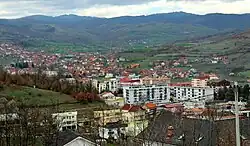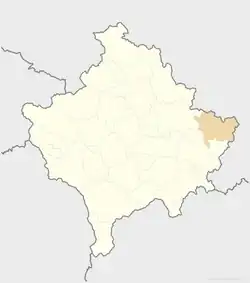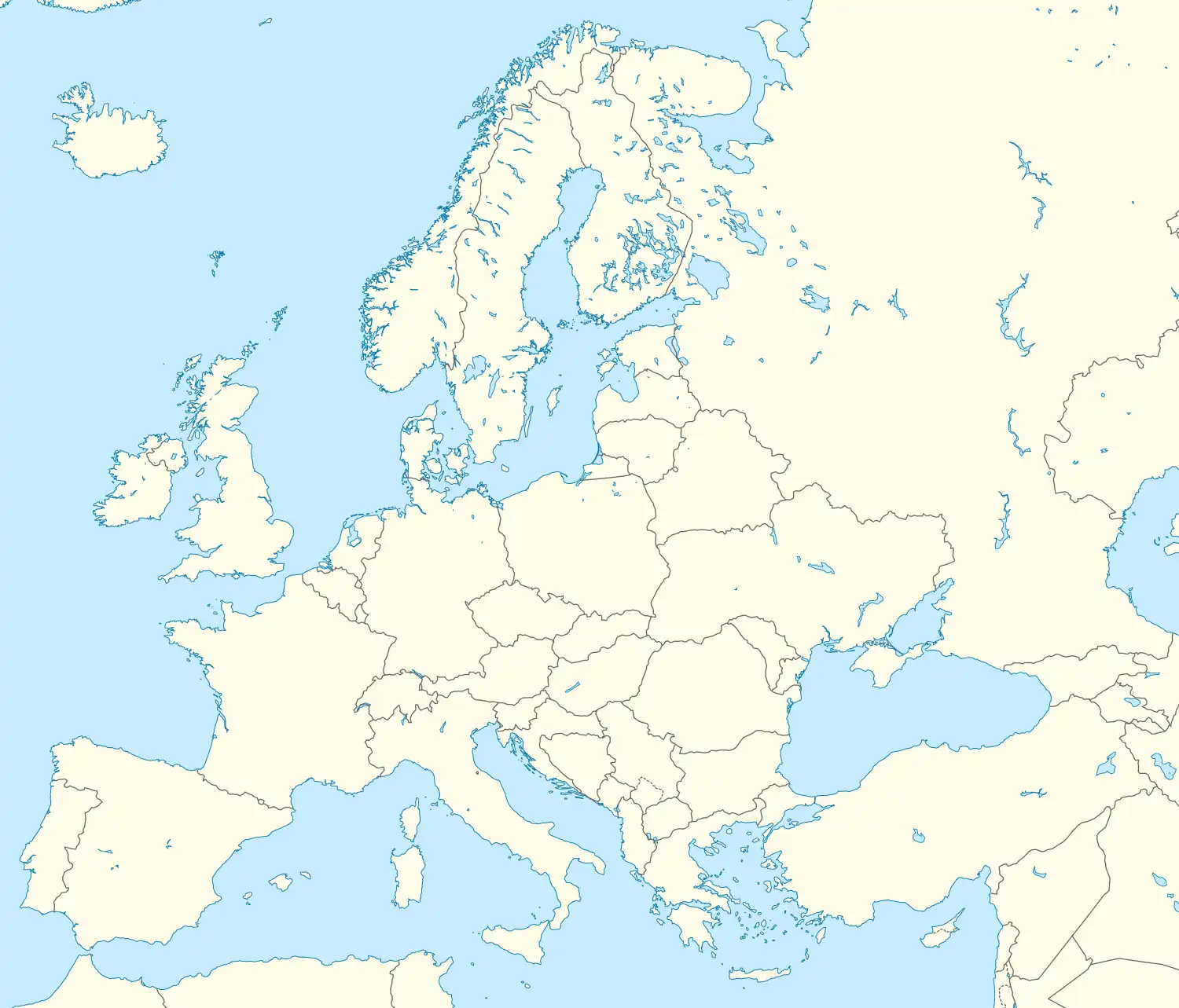Kamenica, Kosovo
Kamenica or Dardana (definite form: Kamenicë or Dardanë), or Kosovska Kamenica (Serbian Cyrillic: Косовска Каменица), is a town and municipality located in the Gjilan District of Kosovo. According to the 2011 census, the town of Kamenica has 7,331 inhabitants, while the municipality has 36,085 inhabitants.
Kamenica
Dardana Kosovska Kamenica | |
|---|---|
Town and municipality | |
 Panorama of the town of Kamenica | |
 Emblem | |
 Kamenica  Kamenica | |
| Coordinates: 42°35′02″N 21°34′30″E | |
| Country | |
| District | Gjilan |
| Government | |
| • Mayor | Kadri Rahimaj (Vetëvendosje) |
| • Municipal | 424 km2 (164 sq mi) |
| Elevation | 470 m (1,540 ft) |
| Population (2011) | |
| • Urban | 7,331 |
| • Municipal | 36,085 |
| • Municipal density | 85/km2 (220/sq mi) |
| Time zone | UTC+1 (CET) |
| • Summer (DST) | UTC+2 (CEST) |
| Postal code | 62000 |
| Area code | +383 280 |
| Car plates | 06 |
| Website | kk |
History
Kamenica always had better than average inter-ethnic relations during the Yugoslav era. Tensions today are low because there was less violence than elsewhere during the Kosovo War.[1]
Geography
The municipality of Kamenica lies in the east of Kosovo. It is bordered to the southwest by Ranillug, to the west by the municipality of Novobërda, to the northwest by Pristina and to the north and east it borders Serbia. Gjilan is located 30 km (19 mi) away, while Pristina is 75 km (47 mi) from Kamenica.
Demographics
| Year | Pop. | ±% p.a. |
|---|---|---|
| 1948 | 37,677 | — |
| 1953 | 39,977 | +1.19% |
| 1961 | 43,058 | +0.93% |
| 1971 | 46,505 | +0.77% |
| 1981 | 48,320 | +0.38% |
| 1991 | 52,152 | +0.77% |
| 2011 | 36,085 | −1.82% |
| 2016 est. | 31,285 | −2.81% |
| Source: Division of Kosovo | ||
According to the 2011 census results, the municipality of Kamenica has 36,085 inhabitants.
Ethnic groups
The ethnic composition of the municipality:
| Ethnic Composition, Including IDPs | |||||||
| Year/Population | Albanians | % | Serbs | % | Roma | % | Total |
|---|---|---|---|---|---|---|---|
| 1961 | 24,549 | 57.74 | 16,973 | 39.92 | 644 | 1.51 | 42,519 |
| 1971 | 29,268 | 62.94 | 16,550 | 35.59 | 474 | 1.02 | 46,505 |
| 1981 | 32,390 | 67.03 | 14,813 | 30.66 | 868 | 1.8 | 48,320 |
| 1991 | 37,632 | 73.4 | 12,930 | 25.2 | 573 | 1.1 | 51,272 |
| August 2003 | 52,000 | 82.5 | 10,500 | 17.6 | 500 | 0.8 | 63,000 |
| Ref: Yugoslav Population Censuses for data through 1991, and Organization for Security and Co-operation in Europe estimates for data for 2003 | |||||||
Politics
Elections for the Mayor of the Municipality and the Municipial Assembly are held every four years. The ballots are separate, where voters can choose from a list of contenders hailing from various political parties on one ballot, and on the other they can choose one candidate for the representative at the Municipial Assembly from a specific partisan or independent list.
